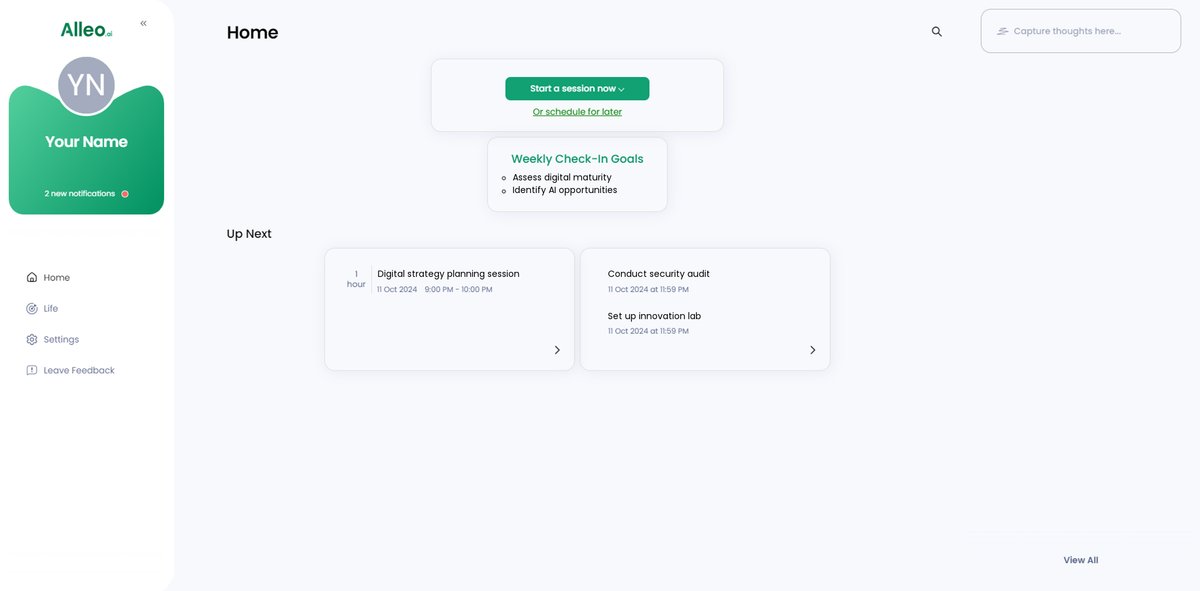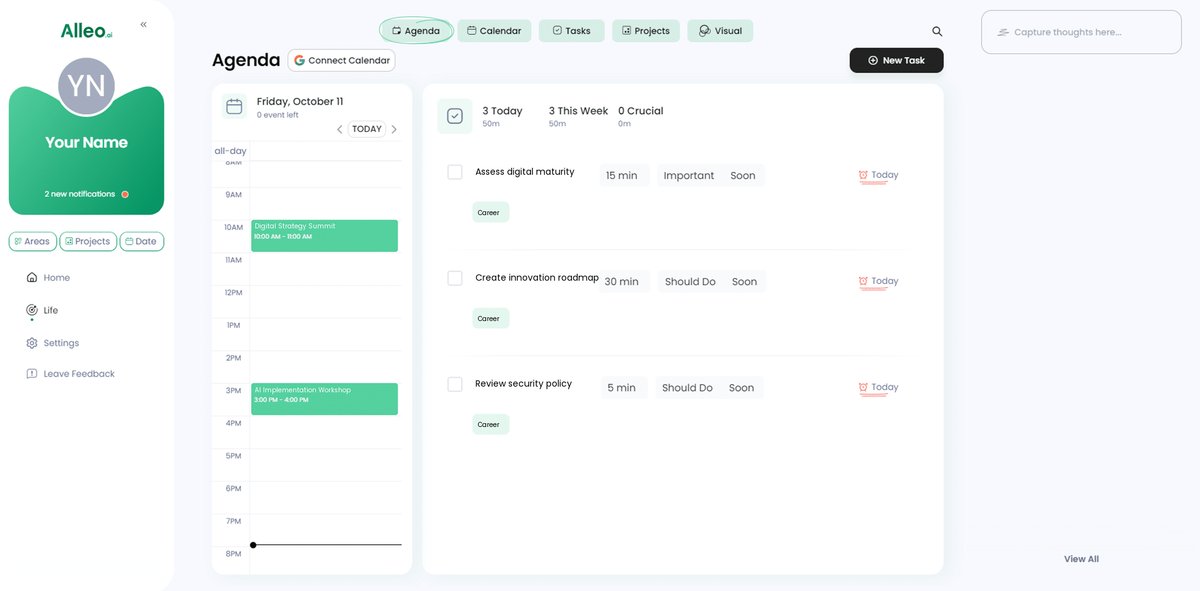7 Powerful Strategies for Business Leaders Navigating Digital Disruption
Are you struggling to keep up with the rapid pace of digital disruption in your industry? Adapting to disruptive technologies and digital transformation in business can be challenging for executives and leaders.
As a life coach, I’ve helped many professionals navigate these challenges. In my experience helping clients implement digital disruption adaptation strategies, I often encounter common hurdles related to change management for executives.
In this article, you’ll discover actionable strategies to build resilience and embrace change. From leveraging AI to fostering innovation strategies for CEOs, these steps will equip you to thrive despite disruptions and develop essential leadership skills for the digital age.
Let’s dive in to explore how you can adapt your business models to tech changes and overcome digital disruption challenges.

Understanding the Challenge of Digital Disruption
The rapid pace of digital transformation in business can leave corporate executives feeling overwhelmed. Many clients initially struggle to keep up with evolving technologies like AI and machine learning, highlighting the need for effective digital disruption adaptation strategies.
This constant change demands resilience and agility, key leadership skills for the digital age.
Consider how traditional business models are disrupted by streaming services or virtual reality. These disruptive technologies in industry force companies to rethink strategies and adapt quickly, emphasizing the importance of innovation strategies for CEOs.
In my experience, people often find digital disruption daunting because it requires a proactive approach. You must anticipate changes and stay ahead, which is crucial for future-proofing your company.
Without resilience, businesses risk falling behind in tech-driven markets.
The pain of digital disruption is real. It affects productivity, competitiveness, and even survival in the market, underscoring the need for agile leadership and data-driven decision making for leaders.

Roadmap to Overcoming Digital Disruption
Overcoming digital disruption requires a strategic approach. Here are the main digital disruption adaptation strategies to focus on to make progress:
- Develop a comprehensive digital strategy: Assess digital maturity, set clear goals, and create a roadmap for digital transformation in business.
- Implement AI and machine learning solutions: Identify key processes, pilot AI solutions, and scale successful initiatives to address disruptive technologies in industry.
- Foster a culture of innovation and agility: Establish innovation strategies for CEOs, encourage cross-functional collaboration, and use agile methodologies for adapting business models to tech changes.
- Upskill workforce for digital competencies: Offer continuous learning, create mentorship programs, and implement a skills-based talent strategy to develop leadership skills for the digital age.
- Enhance cybersecurity and risk management: Conduct security audits, train employees, and develop an incident response plan to address digital disruption challenges and solutions.
- Leverage data for strategic decision-making: Implement analytics tools, use data-driven decision making for leaders, and update data governance policies.
- Adopt design thinking for problem-solving: Train on design thinking, apply it to business challenges, and foster a creative culture for future-proofing your company.
Let’s dive into these digital disruption adaptation strategies for agile leadership in tech-driven markets!
1: Develop a comprehensive digital strategy
Developing a comprehensive digital strategy is crucial for navigating digital disruption effectively and implementing successful digital disruption adaptation strategies.
Actionable Steps:
- Conduct a digital maturity assessment to identify your current capabilities and gaps in digital transformation in business.
- Set clear, measurable digital transformation goals that align with your business objectives, focusing on innovation strategies for CEOs.
- Create a detailed roadmap for digital initiatives, including timelines and resource allocation, to address digital disruption challenges and solutions.
Explanation: These steps are essential for forming a solid foundation in digital transformation and adapting business models to tech changes.
By assessing your digital maturity, you understand where you stand and what needs improvement in the context of disruptive technologies in industry.
Clear goals ensure alignment with your business objectives, while a detailed roadmap guides your initiatives, promoting agile leadership in tech-driven markets.
According to Leadership Insights, a structured approach is key to successful digital transformation.
Key benefits of a comprehensive digital strategy for digital disruption adaptation:
- Improved competitive positioning
- Enhanced operational efficiency through data-driven decision making for leaders
- Increased customer satisfaction
Ready to transform your business and develop leadership skills for the digital age?
Let’s move on to leveraging AI and machine learning as part of your digital disruption adaptation strategies.

2: Implement AI and machine learning solutions
Implementing AI and machine learning solutions is crucial for adapting to digital disruption and staying competitive in today’s tech-driven markets.
Actionable Steps:
- Identify key business processes that can benefit from AI and machine learning. Start with areas where automation can enhance efficiency and drive digital transformation in business.
- Pilot AI solutions in one department to measure the impact and learn from the implementation. Use those insights to refine your approach for future-proofing your company.
- Scale successful AI initiatives across the organization for broader benefits, ensuring each deployment aligns with your digital disruption adaptation strategies.
Explanation: These steps help you harness the power of AI to improve efficiency and drive innovation within your organization, addressing digital disruption challenges and solutions.
Piloting AI initiatives allows you to test their effectiveness before a wider rollout, supporting agile leadership in tech-driven markets.
According to Emeritus, 80% of organizations implementing AI-based solutions do so to accelerate innovation, showcasing the potential benefits for adapting business models to tech changes.
Ready to foster a culture of innovation and agility?
Let’s move on to that.

3: Foster a culture of innovation and agility
Fostering a culture of innovation and agility is key to thriving amid digital disruption. Implementing digital disruption adaptation strategies is crucial for businesses looking to stay competitive.
Actionable Steps:
- Establish innovation labs to experiment with new ideas and technologies. These labs can serve as a sandbox for creative solutions and drive innovation strategies for CEOs.
- Encourage cross-functional teams to collaborate on innovative projects. This approach brings diverse perspectives and enhances problem-solving, crucial for adapting business models to tech changes.
- Implement agile methodologies to improve responsiveness and flexibility. Agile practices help teams adapt quickly to changes, addressing digital disruption challenges and solutions.
Explanation: These steps are crucial for creating an environment where innovation flourishes and for developing leadership skills for the digital age.
Innovation labs provide a dedicated space for experimentation, while cross-functional collaboration fosters diverse thinking, essential for future-proofing your company.
Agile methodologies ensure your organization can swiftly adapt to new challenges. According to Goizueta Business School, leveraging agile practices is essential for navigating digital transformation.
This proactive approach prepares your organization for continuous change and innovation, key components of digital disruption adaptation strategies.
Let’s move on to upskilling your workforce for digital competencies, an essential aspect of change management for executives.

4: Upskill workforce for digital competencies
Upskilling your workforce for digital competencies is essential to stay competitive and resilient in today’s rapidly evolving business landscape. This is a crucial part of digital disruption adaptation strategies for companies looking to thrive in the digital age.
Actionable Steps:
- Offer continuous learning opportunities through online courses and workshops. This keeps employees updated on the latest digital trends and supports digital transformation in business.
- Create mentorship programs to help employees develop digital skills. Pair experienced mentors with those who need guidance, fostering leadership skills for the digital age.
- Implement a skills-based talent strategy to identify and nurture digital talent. Focus on skillsets rather than traditional experience, addressing digital disruption challenges and solutions.
Explanation: These steps ensure your workforce remains adaptable and equipped to handle digital disruptions, which is crucial for future-proofing your company.
Continuous learning opportunities keep your team informed and agile, supporting innovation strategies for CEOs. Mentorship programs facilitate knowledge transfer and skill development, essential for adapting business models to tech changes.
According to CIO, a skills-based talent strategy helps build business resilience by addressing the skills gap effectively, a key aspect of digital disruption adaptation strategies.
Next, let’s enhance your cybersecurity and risk management strategies, which are vital for data-driven decision making for leaders in tech-driven markets.

5: Enhance cybersecurity and risk management
Enhancing cybersecurity and risk management is crucial for safeguarding your business in the digital age, especially when implementing digital disruption adaptation strategies.
Actionable Steps:
- Conduct regular security audits to identify and address vulnerabilities. This helps in proactively mitigating potential risks before they escalate, supporting your leadership skills for the digital age.
- Train employees on cybersecurity best practices and protocols. Regular training ensures everyone is aware of the latest threats and how to handle them, crucial for adapting business models to tech changes.
- Develop a robust incident response plan to manage potential breaches effectively. This plan will guide your actions during a cybersecurity incident, addressing digital disruption challenges and solutions.
Explanation: These steps are vital for protecting your organization against cyber threats and ensuring a swift response to incidents. Regular security audits help in identifying weak points, while employee training keeps your team prepared for digital transformation in business.
According to Champlain College Online, a robust incident response plan is essential for managing cybersecurity risks effectively.
Key components of a strong cybersecurity strategy:
- Multi-factor authentication
- Regular software updates
- Data encryption
Ready to leverage data for strategic decision-making? Let’s move on to that.

6: Leverage data for strategic decision-making
Leveraging data effectively can transform your decision-making process and boost strategic outcomes in the face of digital disruption adaptation strategies.
Actionable Steps:
- Implement data analytics tools to gain actionable insights from business operations. Start by identifying key performance indicators (KPIs) to track for data-driven decision making for leaders.
- Use data-driven decision-making to optimize processes and improve efficiency. Regularly review data to make informed choices in adapting business models to tech changes.
- Regularly review and update data governance policies to ensure data quality and compliance. This includes establishing clear guidelines for data usage in the context of digital transformation in business.
Explanation: These steps are vital for making informed decisions that drive success in the age of digital disruption. By implementing data analytics tools, you can uncover trends and optimize processes to address digital disruption challenges and solutions.
Regular data reviews ensure you stay on track with your goals for future-proofing your company. According to Goizueta Business School, leveraging data for decision-making is crucial for maintaining competitive advantage in tech-driven markets.
Ready to adopt design thinking for problem-solving? Let’s move on to that.

7: Adopt design thinking for problem-solving
Adopting design thinking for problem-solving is crucial for fostering creativity and addressing business challenges effectively in the age of digital disruption. This approach is key to digital disruption adaptation strategies.
Actionable Steps:
- Train employees on design thinking principles and methodologies. Conduct workshops to familiarize staff with these innovative approaches for digital transformation in business.
- Apply design thinking to identify user-centric solutions to business challenges. Start with small projects to illustrate the benefits of adapting business models to tech changes.
- Foster a culture that values creativity and iterative problem-solving. Encourage employees to experiment and share their ideas, developing leadership skills for the digital age.
Explanation: These steps matter because design thinking encourages a user-centric approach and fosters innovation. Training employees ensures they understand and apply these principles effectively, helping to address digital disruption challenges and solutions.
According to Goizueta Business School, leveraging design thinking can significantly enhance problem-solving capabilities and drive innovation in tech-driven markets.
Core principles of design thinking:
- Empathize with users
- Define the problem clearly
- Ideate multiple solutions
- Prototype and test iteratively
Adopting design thinking will help your organization navigate complex challenges and stay competitive in the face of digital disruption, supporting future-proofing your company.
Partner with Alleo on Your Digital Transformation Journey
We’ve explored the challenges of digital disruption and how to overcome them with effective digital disruption adaptation strategies. But did you know you can work directly with Alleo to make this journey easier and faster, enhancing your leadership skills for the digital age?
Setting up an account with Alleo is simple. Start with a free 14-day trial—no credit card needed. This is an excellent opportunity to begin future-proofing your company against disruptive technologies in industry.
To begin, create a personalized plan with Alleo’s AI coach. Identify your key challenges in digital transformation in business.
The coach will help you set and track goals, focusing on innovation strategies for CEOs. Alleo will provide tailored coaching sessions, just like a human coach, to support your change management for executives.
Alleo’s AI coach follows up on your progress in adapting business models to tech changes. It handles changes and keeps you accountable via text and push notifications, promoting data-driven decision making for leaders.
Ready to get started for free and address digital disruption challenges and solutions?
Let me show you how to embrace agile leadership in tech-driven markets!
Step 1: Log In or Create Your Account
To begin your digital transformation journey with Alleo’s AI coach, Log in to your account or create a new one to access personalized guidance and start your 14-day free trial.

Step 2: Choose Your Focus Area
Select “Setting and achieving personal or professional goals” to align your efforts with overcoming digital disruption challenges. This focus will help you develop the resilience and skills needed to thrive in a rapidly changing digital landscape.

Step 3: Select “Career” as Your Focus Area
Choose “Career” as your focus area to align with your digital transformation goals, enabling Alleo’s AI coach to provide tailored strategies for navigating professional challenges and embracing technological advancements in your industry.

Step 4: Starting a Coaching Session
Begin your digital transformation journey by scheduling an intake session with Alleo’s AI coach to create a personalized plan that addresses your specific challenges and goals.

Step 5: Viewing and managing goals after the session
After your coaching session, check the Alleo app’s home page to view and manage the goals you discussed, allowing you to track your progress and stay accountable on your digital transformation journey.

Step 6: Adding events to your calendar or app
Use Alleo’s calendar and task features to easily add and track events related to your digital transformation goals, allowing you to monitor your progress and stay accountable as you tackle digital disruption challenges.

Embrace Change and Build Resilience
Transitioning from theory to action is key to thriving in a digital world and implementing effective digital disruption adaptation strategies.
To summarize, tackling digital disruption involves developing a comprehensive strategy, implementing AI, fostering innovation strategies for CEOs, and upskilling your workforce. Enhancing cybersecurity, leveraging data for data-driven decision making, and adopting design thinking are also crucial steps in digital transformation in business.
I know it can be overwhelming, but you’re not alone in facing digital disruption challenges and solutions.
With Alleo, you have a dedicated partner to guide you through change management for executives. Our AI coach can help you set and achieve your digital transformation goals, enhancing your leadership skills for the digital age.
So, take the first step now in adapting business models to tech changes. Sign up for a free 14-day trial and start your journey towards resilience and growth in tech-driven markets.